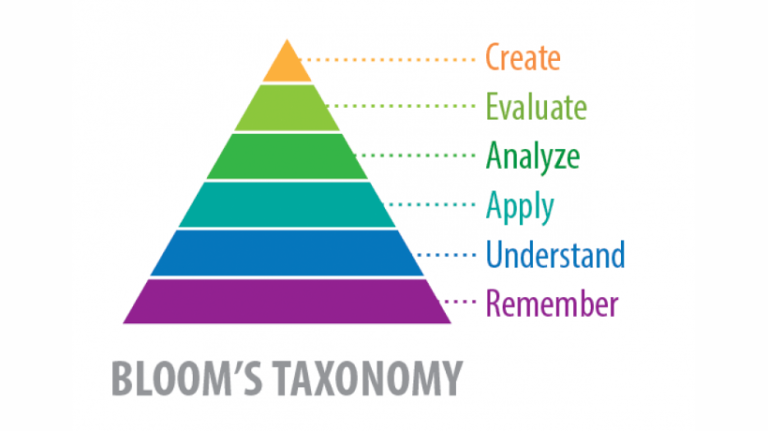Learning is defined as a multistep process, regardless of what you are learning. Bloom’s taxonomy of the cognitive mind includes six levels of a pyramid, starting with Remembering and ending with the most complex level, which is Creation.
In the process of AI learning, the last three levels are crucial to applying AI/ML strategies successfully.
Analyze: The top of the learning pyramid starts with using critical thinking skills to analyze the results. The best way to analyze something complex, like an AI model made up of thousands of data points, is to break all the information up as much as possible to connect all the dots as evidence of new insights that you can translate based on the data. For example, looking at your data VS a successful competitor’s data and comparing what you do differently or what you have in common with the strategies used.
Evaluate: Mostly, no one knows a brand’s best course of action better than the brand itself. So even when analyzing AI data and insights, you need to use human intelligence – judgment. We can describe this as a way of thinking that involves a blend of AI insights with what you already know about your brand and its audience, based on experience. This is the key to data-driven decision-making.
Create: The last level in the learning process is implementing what you learned from analyzing and evaluating your data and insights by creating new strategies based on the new ideas you formed from the previous two levels of the process.
When using an AI/ML-driven data strategy, it’s vital to work through these last three levels of the learning pyramid to ensure you understand the role of data-driven insights. All too often, the creation stage is started too early before the teachings are applied. This alone could be the difference between success and failure.
Learning isn’t just as simple as reading and memorizing the data. The key to success is how you interpret and apply what you are learning.




